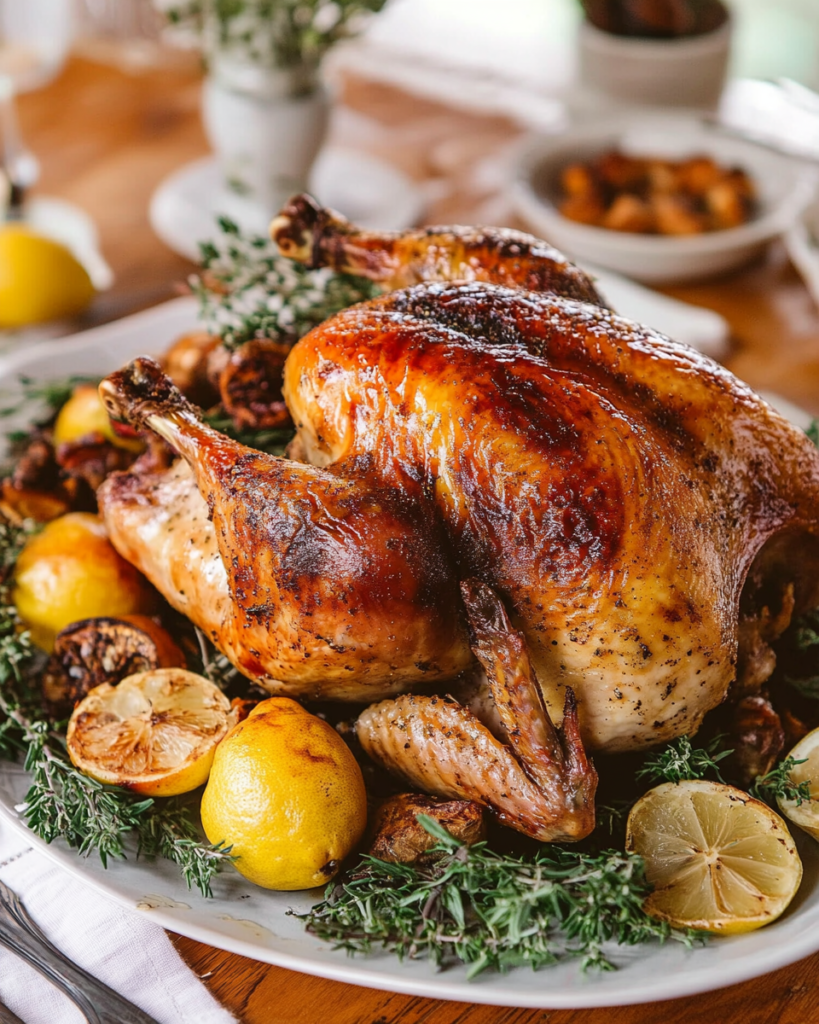
Lemon herb roast chicken is a classic dish that epitomizes comfort, elegance, and flavor. Its combination of crispy, golden skin, tender meat, and aromatic herbs makes it a favorite choice for family dinners, holiday celebrations, or even casual gatherings. The tangy brightness of lemon paired with the earthiness of herbs like rosemary, thyme, and parsley creates a harmonious flavor profile that elevates a simple roast chicken into a gourmet experience.
This recipe is versatile enough to be served year-round. In the summer, it pairs beautifully with fresh salads and chilled white wine, while in the cooler months, it becomes a hearty centerpiece alongside roasted vegetables and warm grain-based sides. Whether you’re a seasoned chef or a beginner in the kitchen, mastering this dish is a skill that pays off in endless delicious meals.
Overview of Lemon Herb Roast Chicken
At its core, lemon herb roast chicken is a whole chicken seasoned with a mixture of fresh herbs, citrus, garlic, and olive oil. The chicken is roasted to perfection, achieving a balance of crispy skin and juicy meat. The cavity of the bird is often stuffed with additional flavorings like halved lemons, fresh herbs, and aromatics, which infuse the meat as it cooks. A proper roast chicken is not only satisfying in taste but also visually stunning, making it an ideal dish for entertaining guests.
Brief History and Cultural Significance
Roasting poultry dates back to ancient civilizations, with evidence of this cooking method found in Roman, Greek, and Egyptian cultures. The simplicity of roasting made it accessible across various regions and time periods. The inclusion of herbs and citrus in poultry recipes became prominent in Mediterranean cuisine, where ingredients like lemons and rosemary were abundant.
Lemon herb roast chicken, as we know it today, gained popularity in European kitchens, particularly in France and Italy. These cuisines emphasized the use of fresh, high-quality ingredients and simple preparation techniques to highlight natural flavors. Over time, the dish transcended borders, becoming a beloved staple in homes and restaurants worldwide. Its versatility and approachable preparation make it a go-to recipe for both festive occasions and everyday meals.
Preparation Phase
Key Ingredients and Their Roles
- Whole Chicken:
- The main ingredient and star of the dish. A fresh, high-quality chicken ensures tender meat and rich flavor. Opt for free-range or organic varieties when possible.
- The size of the chicken influences cooking time; a 4-5 pound bird is ideal for most recipes.
- Lemon:
- Adds brightness and acidity, which balance the richness of the chicken.
- The juice is used in marinades and the cavity is often stuffed with halved lemons to release their aroma during roasting.
- Herbs:
- Fresh rosemary, thyme, and parsley are classic choices. Their fragrant oils permeate the meat, enhancing the flavor.
- Dried herbs can be substituted, but fresh herbs offer a more vibrant taste.
- Garlic:
- A staple in savory dishes, garlic brings depth and a slightly sweet undertone to the chicken.
- Whole cloves can be placed in the cavity, while minced garlic is used in marinades or herb butter.
- Olive Oil or Butter:
- Fat is essential for achieving crispy, golden skin and retaining moisture in the meat.
- Olive oil lends a Mediterranean touch, while butter adds richness and flavor.
- Salt and Pepper:
- The simplest but most crucial seasonings. Salt enhances natural flavors, while pepper adds a mild heat and aromatic depth.
- Optional Additions:
- Vegetables like carrots, onions, and celery can be placed in the roasting pan to absorb the drippings and create a flavorful side dish.
- Spices such as paprika or cayenne can be added for a subtle kick.
Tools and Equipment
- Roasting Pan:
- A sturdy, deep pan with a rack allows for even cooking and prevents the chicken from sitting in its juices.
- Alternatives include a cast-iron skillet or baking dish.
- Meat Thermometer:
- Essential for ensuring the chicken is cooked to a safe internal temperature of 165°F (74°C).
- Kitchen Twine:
- Used for trussing the chicken, which helps it cook evenly and maintain its shape.
- Pastry Brush:
- Ideal for applying herb butter or oil to the chicken’s skin.
- Sharp Knife and Cutting Board:
- For carving the chicken after it’s cooked and rested.
Preparation Steps
- Preparing the Chicken
- Remove the chicken from its packaging and discard any giblets or neck pieces from the cavity.
- Rinse the chicken under cold water and pat it dry with paper towels. Dry skin is crucial for achieving crispiness during roasting.
- Seasoning the Cavity
- Season the inside of the chicken with salt and pepper.
- Insert halved lemons, a handful of fresh herbs, and a few whole garlic cloves into the cavity. These aromatics will infuse the meat with flavor as the chicken roasts.
- Herb Butter or Marinade
- Prepare a mixture of softened butter or olive oil, minced garlic, chopped herbs, lemon zest, and a pinch of salt and pepper.
- Gently loosen the skin over the chicken breast with your fingers and spread the herb butter underneath. This ensures the breast meat stays moist and flavorful.
- Trussing the Chicken
- Use kitchen twine to tie the legs together and tuck the wings under the body. Trussing helps the chicken cook evenly and maintain its presentation.
- Preparing the Roasting Pan
- Arrange chopped vegetables or a roasting rack in the pan to elevate the chicken.
- Drizzle the vegetables with olive oil and season with salt and pepper if using them.
- Preheating the Oven
- Preheat the oven to 425°F (220°C). A hot oven ensures the skin starts crisping immediately.
- Roasting the Chicken
- Place the chicken breast-side up in the roasting pan.
- Roast at 425°F for the first 20 minutes to crisp the skin, then reduce the temperature to 375°F (190°C) for the remainder of the cooking time.
- Basting for Flavor
- Every 20–30 minutes, spoon pan drippings over the chicken to keep it moist and flavorful.
- Be cautious not to let the oven lose too much heat during this process.
- Checking for Doneness
- Insert a meat thermometer into the thickest part of the thigh without touching the bone. The chicken is done when it reads 165°F (74°C).
- Alternatively, check that the juices run clear when the thigh is pierced with a knife.
- Resting the Chicken
- Remove the chicken from the oven and tent it loosely with aluminum foil.
- Allow it to rest for 15–20 minutes. Resting redistributes the juices, ensuring moist and tender meat.
Advanced Techniques and Flavor Variations
While a classic lemon herb roast chicken is already a showstopper, there are numerous ways to elevate the dish with advanced techniques and creative variations. By experimenting with flavor profiles, cooking methods, and accompaniments, you can adapt this recipe to suit a wide range of occasions and preferences.
1. Flavor Variations
Citrus Combinations
- Incorporate a mix of citrus fruits, such as oranges, limes, or grapefruits, to create a more complex flavor profile.
- Pair each citrus fruit with complementary herbs: thyme with oranges, cilantro with limes, or tarragon with grapefruits.
- Zest the citrus fruits directly over the chicken before roasting to release aromatic oils.
Herb Blends
- Experiment with less common herbs like marjoram, sage, or tarragon for unique twists.
- Create a dried herb rub by combining thyme, rosemary, oregano, and garlic powder for a bold crust.
- Use fresh parsley as a garnish post-roasting for a pop of color and freshness.
Spiced Herb Butter
- Infuse your herb butter with spices like paprika, smoked chili powder, or cumin to add a warm, smoky undertone.
- For a Middle Eastern twist, mix za’atar or sumac into the butter.
- Add a pinch of turmeric for a golden hue and subtle earthiness.
Garlic Variations
- Roast whole garlic bulbs alongside the chicken. The softened cloves can be squeezed out and spread over the meat or bread.
- For a milder garlic flavor, infuse olive oil with garlic cloves before using it in the recipe.
- Add black garlic for a slightly sweet, umami-rich depth of flavor.
2. Stuffing the Chicken
Traditional Herb and Lemon Stuffing
- Fill the cavity with a mix of lemon halves, fresh rosemary, thyme, and garlic cloves.
- Add a sprig of parsley for a fresh, grassy note.
Vegetable-Based Stuffing
- Use aromatic vegetables like onions, celery, and carrots to create a savory stuffing.
- Add a few slices of fennel for a subtle anise flavor.
- Toss the vegetables with olive oil and a sprinkle of salt before inserting them into the cavity.
Fruit and Nut Stuffing
- Combine dried apricots, cranberries, or cherries with nuts like almonds or pecans.
- Add a touch of honey or maple syrup for sweetness and balance with the savory herbs.
- This variation works beautifully for festive occasions like Thanksgiving or Christmas.
Rice or Grain Stuffing
- Prepare a savory rice pilaf or quinoa mixture with chopped herbs, garlic, and lemon zest.
- Add raisins or pine nuts for texture and flavor contrast.
- Ensure the stuffing is partially cooked before placing it in the cavity to avoid undercooking.
3. Cooking Techniques
Spatchcocking
- Remove the backbone of the chicken and flatten it for quicker, more even cooking.
- This technique ensures crisp skin all over and makes it easier to carve.
- Roast the spatchcocked chicken over a bed of vegetables for added flavor and moisture.
Grilling
- Grill the chicken over indirect heat to achieve a smoky flavor.
- Use wood chips like hickory or applewood for an aromatic boost.
- Baste the chicken regularly with a lemon herb marinade to keep it moist.
Slow Roasting
- Roast the chicken at a lower temperature (around 300°F or 150°C) for a longer time.
- Slow roasting results in incredibly tender meat that falls off the bone.
- Finish with a high-temperature blast for crispy skin.
Dutch Oven Roasting
- Roast the chicken in a covered Dutch oven to retain moisture and intensify flavors.
- Remove the lid during the last 15–20 minutes to brown the skin.
- Add root vegetables to the pot for a complete one-dish meal.
4. Accompaniments and Side Dishes
Roasted Vegetables
- Roast potatoes, carrots, parsnips, and onions in the same pan as the chicken to soak up the drippings.
- Add a touch of honey or maple syrup to the vegetables for caramelization.
- Include Brussels sprouts or green beans for a pop of color and crunch.
Grain-Based Sides
- Pair the chicken with herbed couscous, lemon quinoa, or a creamy risotto.
- Infuse the grains with chicken drippings or a splash of lemon juice for cohesion.
- Add toasted nuts, dried fruits, or fresh herbs for texture and flavor.
Salads
- A crisp green salad with arugula, shaved fennel, and a lemon vinaigrette provides a refreshing contrast.
- For heartier options, try a warm lentil salad with roasted vegetables or a Mediterranean chickpea salad.
- Use leftover chicken as a topping for next-day salads.
Sauces and Gravies
- Whisk the pan drippings with a splash of white wine, chicken stock, and a pat of butter to create a quick gravy.
- Prepare a lemon cream sauce by reducing heavy cream with garlic, lemon zest, and Parmesan.
- Serve with tzatziki or chimichurri for a global twist.
Bread and Starches
- Serve the chicken with freshly baked crusty bread to mop up the flavorful juices.
- Mashed potatoes or polenta provide a comforting, creamy accompaniment.
- Try wild rice or farro pilaf for a rustic, nutty side.
5. Presentation Tips
- Arrange the roasted chicken on a platter surrounded by colorful roasted vegetables for visual appeal.
- Garnish with fresh herb sprigs and thin lemon slices to highlight the dish’s flavors.
- Carve the chicken tableside for an interactive and elegant presentation.
- Drizzle a bit of the pan sauce over the carved meat for added moisture and flavor.
6. Leftover Ideas
Chicken Salad
- Shred leftover chicken and toss with a lemon herb dressing, celery, and red onion for a refreshing salad.
- Serve over greens, in a wrap, or on toasted bread.
Soup or Broth
- Use the leftover carcass to make a flavorful chicken broth.
- Add vegetables, rice, or noodles for a hearty chicken soup.
Pasta Dishes
- Incorporate the chicken into pasta with a garlic cream sauce, lemon zest, and fresh parsley.
- Create a light pasta dish with olive oil, roasted vegetables, and shredded chicken.
Sandwiches or Wraps
- Layer the chicken with avocado, tomato, and mixed greens in a sandwich or wrap.
- Add a dollop of aioli or pesto for extra flavor.
Chicken Fried Rice
- Dice the leftover chicken and stir-fry it with rice, vegetables, soy sauce, and sesame oil.
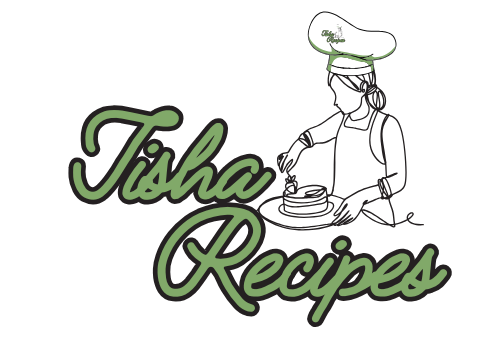
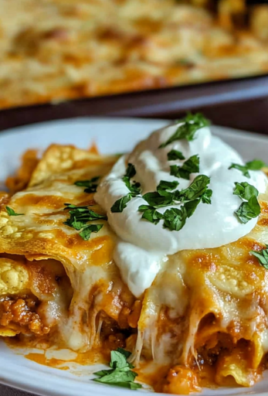
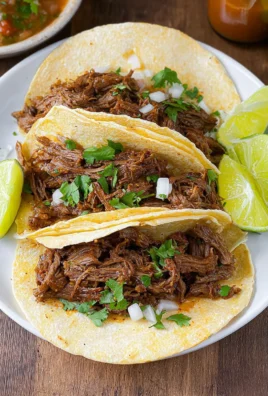
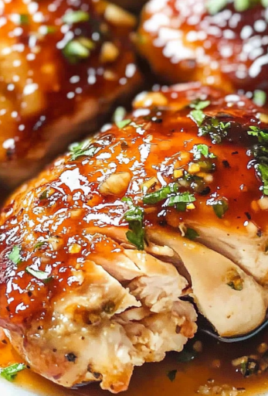
Leave a Comment